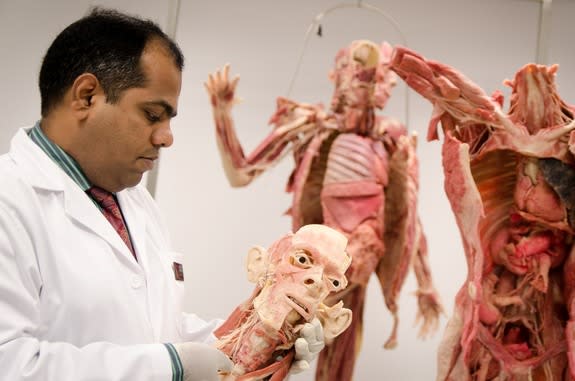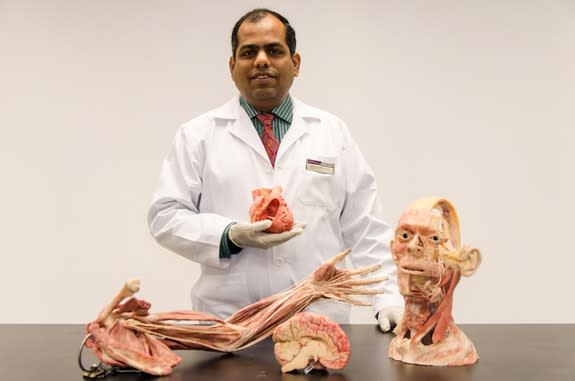Plasticized Bodies Come to Singapore Medical School
At a Singapore medical school, doctors-to-be are learning anatomy on human bodies preserved in plastic.
The bodies, which were donated to science, have undergone a process called plastination, which replaces the fat and water in a cadaver with plastic and other polymers. The treatment maintains the tissues' structural properties and prevents decay.
The medical school at Nanyang Technological University (NTU) will be using plastinated bodies in its first class in August. The school has ordered two whole bodies from Germany, as well as body parts, including hearts, lungs, brains, limbs and torsos.
Plastinated specimens have several advantages: They are of good quality, sturdy and preserve intricate details of the muscles, arteries, veins and nerves. These structures start to deteriorate in traditional cadavers.
"These highly detailed, plastinated human specimens are very durable, and can be repeatedly handled by students without deterioration, and it can be stored just like any inert object," anatomy professor Dinesh Kumar Srinivasan of NTU's medical school said in a statement.
The plastinated bodies and body parts will replace traditionally embalmed cadavers, which are in short supply in Singapore, where people may fear that their body will be mishandled after death.
The downside to using plastinated bodies is that students lose the hands-on experience of dissecting a human body themselves, which many medical educators consider a vital part of a physician's training. But given the shortage of body donors in Singapore, the use of plastinated bodies in medical schools may become more common. Warwick University in the United Kingdom and several other medical schools are also using plastinated specimens.
Plastination was first developed by German anatomist Gunther von Hagens in 1977. Hagens created the popular but controversial traveling exhibition of plastinated bodies called "Body Worlds."
Follow Tanya Lewis on Twitter and Google+. Follow us @livescience, Facebook & Google+. Original article on LiveScience.com.
Copyright 2013 LiveScience, a TechMediaNetwork company. All rights reserved. This material may not be published, broadcast, rewritten or redistributed.




